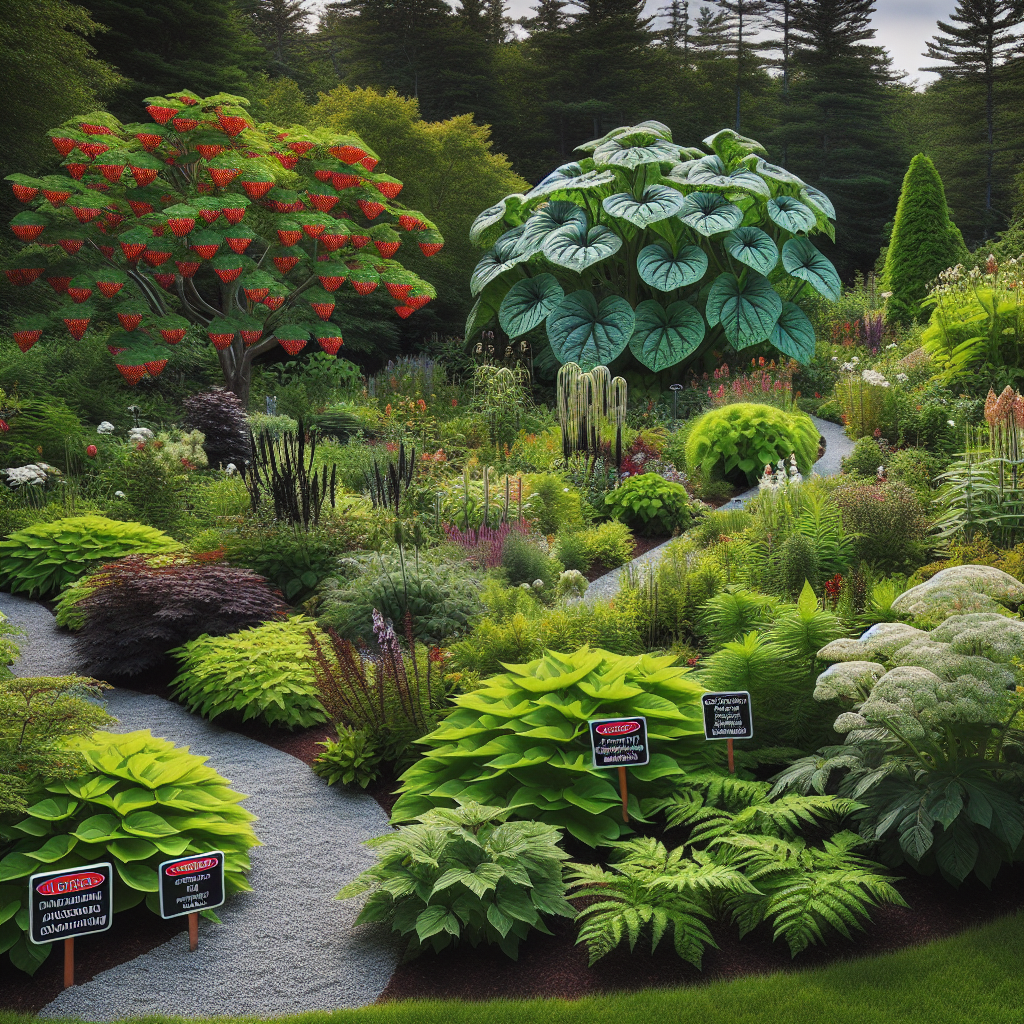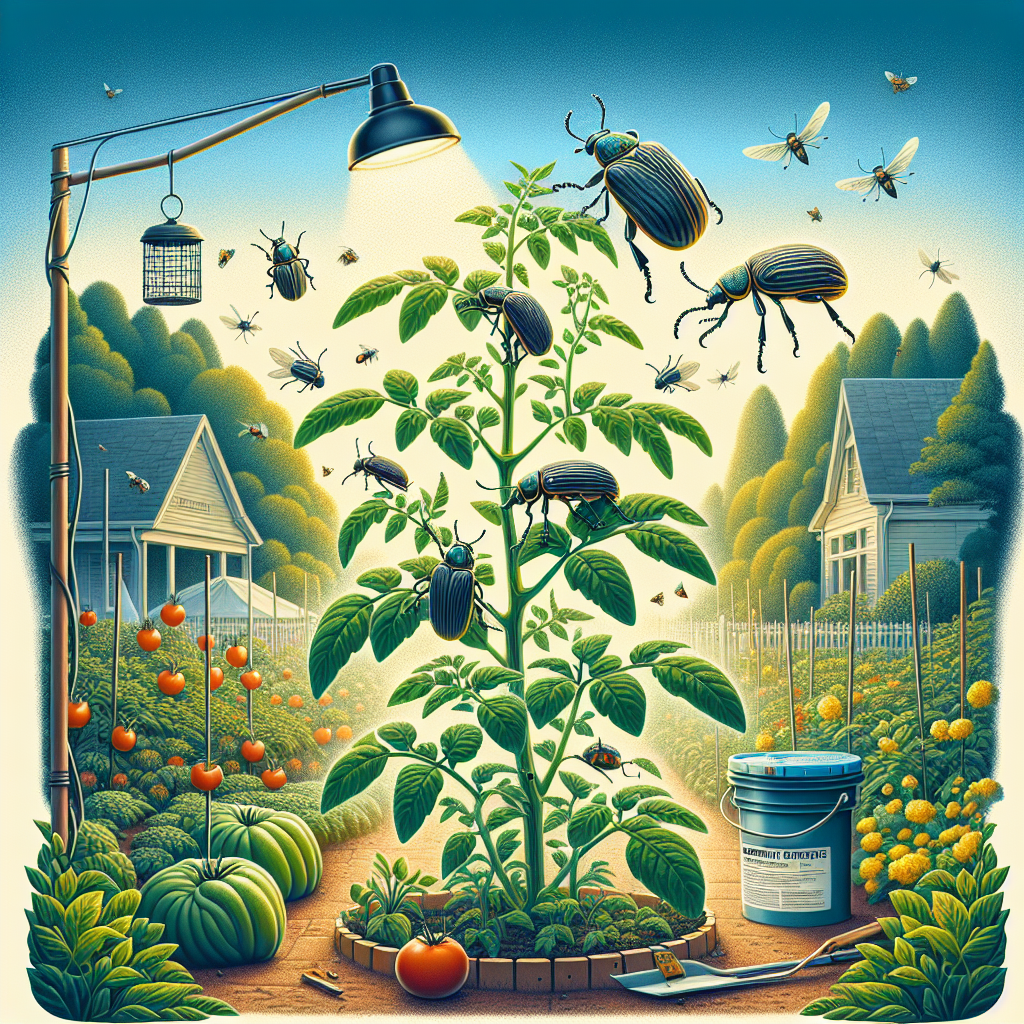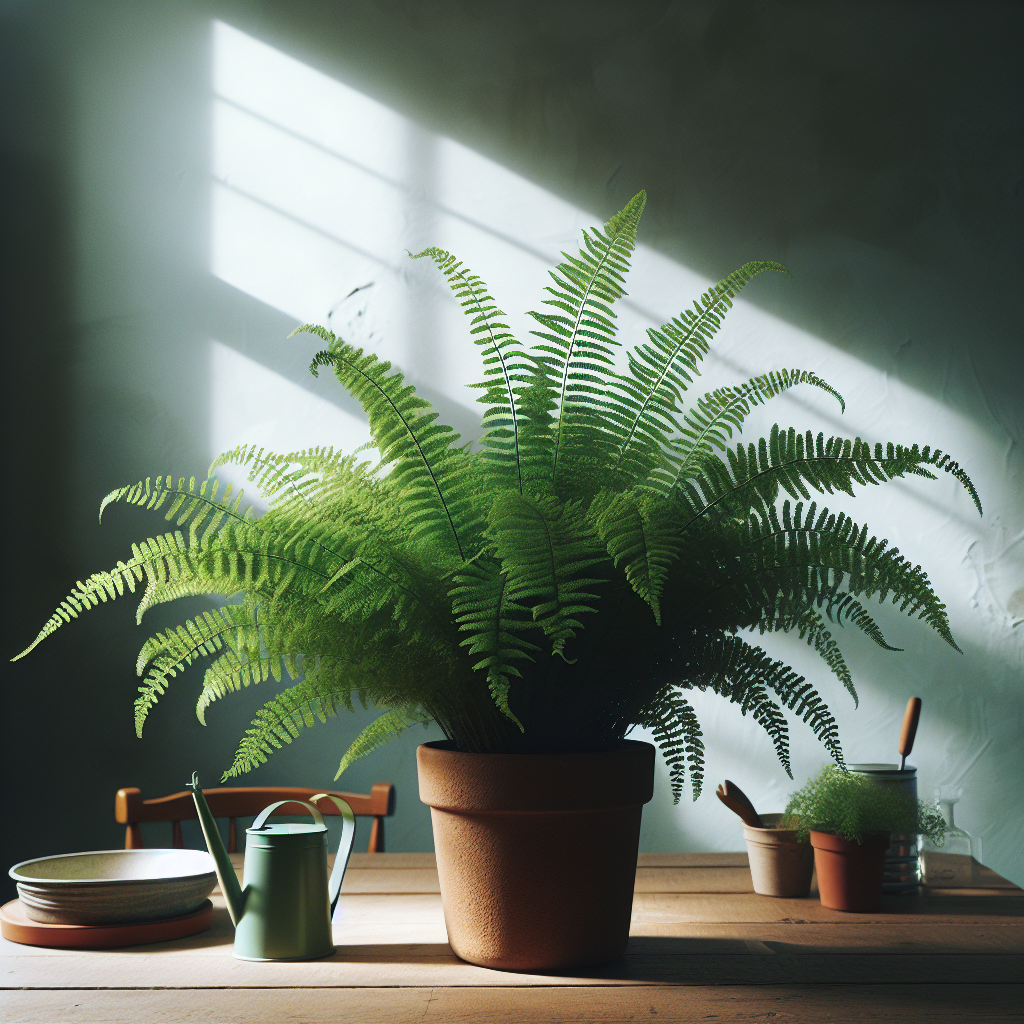Defending Hyacinths from Bulb Rot
Updated June 6, 2024 at 2:58 am
Explore practical strategies to protect your beloved hyacinths from the dreaded bulb rot, ensuring your garden remains a vibrant showcase of these fragrant spring bloomers.

Understanding Bulb Rot in Hyacinths
Gardeners love hyacinths for their vibrant colors and sweet fragrance, yet these charming flowers can fall prey to bulb rot, a gardener’s nightmare. Bulb rot typically results from fungal or bacterial infections causing the bulb to soften and decay. The task of protecting these blooms might seem daunting, but fear not, as you might be looking for ways to keep your hyacinths blooming year after year.
Identifying Symptoms of Bulb Rot
To defend hyacinths from bulb rot, it’s crucial to catch the early signs. There might be a range of indicators that signal trouble below the soil, from wilting leaves, stunted growth, to discoloration. You might notice the bulbs becoming mushy or emitting an unpleasant odor, both telltale signs that something is amiss.
Preventative Measures Against Bulb Rot
Preventing bulb rot starts with good cultural practices. It’s wise to use well-draining soil and to manage watering carefully. Overly damp conditions can create an environment friendly to pathogens. A little vigilance in your watering routine could go a long way in keeping rot at bay, saving you from future headaches.
- Pet Friendly: Generally, hyacinths are toxic to pets. Care might include keeping these flowers out of reach to prevent ingestion and potential health issues.
- Light Requirements: Hyacinths thrive in full sun to partial shade. Proper light not only encourages blooms but helps keep the bulbs dry and less susceptible to rot.
- Watering: Overwatering can lead to bulb rot. Watering hyacinths might need balance, providing enough moisture for growth while avoiding saturation.
- Humidity: While they enjoy some humidity, too much can foster fungal growth. It could be helpful to monitor the humidity around your hyacinths, especially if growth seems stunted.
- Temperature: These bulbs prefer cooler temperatures, so high heat combined with moisture could increase the risk of rot. Watching the thermometer might save your blooms from premature demise.
- Difficulty: With the right knowledge and care, defending against bulb rot isn’t difficult. It’s about paying attention to the needs of your hyacinths and acting proactively.
Choosing the Right Soil
The right kind of soil is your first line of defense against bulb rot for your hyacinths. You might want to opt for well-draining soil that allows water to pass easily, preventing waterlogging. Adding sand or perlite could improve soil structure and reduce the likelihood of bulb rot setting in.
Planting with Care
When you plant your hyacinth bulbs, being gentle is the key. Avoiding damage to the outer layers of the bulbs could prevent pathogens from gaining an easy entry point. When planting, it could be best to place the bulbs at the right depth, usually around 4 inches, to allow proper root growth and drainage.
Watering Hyacinths Effectively
Hyacinths require water to flourish, yet too much could lead to their downfall. Watering might be most beneficial at the base of the plant and in the morning, allowing excess moisture to evaporate throughout the day. A soaker hose could be a great investment, delivering water directly to the roots and minimizing splash on the foliage.
Proper Fertilization Techniques
While hyacinths need nutrients, excessive fertilizer can harm more than help. You might find that a balanced slow-release fertilizer applied in the early spring as new growth appears could boost your plants without encouraging rot.
Monitoring and Controlling Pests
Pests can cause damage to hyacinths, creating openings for rot. A good practice might include regular inspections for signs of pests. Natural remedies, like neem oil, might be effective in controlling pests and are widely recommended by gardeners facing similar struggles.
Common Fungal Infections and Treatment Options
Fusarium rot and Penicillium rot are common fungal threats to hyacinth bulbs. Treatment options often include fungicides, and one such product garnering attention is the “BioAdvanced 3-in-1 Insect, Disease, & Mite Control.” Reviews suggest it can tackle a broad spectrum of issues with its triple-action formula, potentially offering relief to your ailing hyacinths.
Find This and More on Amazon
Treating Bulb Rot Organically
For those looking for organic approaches, products like “Monterey LG 6346 Epsom Salt” have been highlighted as being effective. As an organic gardener, you might find that using Epsom Salt to strengthen cell walls and improve nutrient uptake could reduce susceptibility to rot without resorting to harsh chemicals.
Find This and More on Amazon
Raising Hyacinths in Pots to Avoid Bulb Rot
If in-ground planting hasn’t been successful, you might consider potting your hyacinths. Pots afford better control over the growing environment, including soil composition and drainage, which could be crucial in warding off rot.
Using Raised Beds for Better Drainage
As another alternative, you might think about growing hyacinths in raised beds. This allows for tailored soil mixtures and improved drainage, which might be particularly beneficial in areas with heavy clay soil or poor natural drainage.
Cleaning and Storing Bulbs Post-Harvest
After the blooming season, proper cleaning and drying of hyacinth bulbs might be imperative. You could let them dry in a ventilated area away from direct sunlight before storing them in a cool, dry place. This might greatly reduce the chances of rot developing during the dormancy period.
Rot-Resistant Varieties of Hyacinths
Some hyacinth varieties come with natural resistance to rot. Researching and choosing such varieties might provide you with a head start on bulb health, allowing you to enjoy the blooms with less worry.
Common Questions About Hyacinths and Bulb Rot
What if My Hyacinths Show Signs of Rot?
In case you notice signs of rot, removing affected bulbs immediately might be the best course of action. This could prevent the spread of the disease to healthy bulbs. In some scenarios, the application of a fungicide might be recommended in combination with cultural controls.
How Often Should I Water My Hyacinths?
Hyacinths typically need water when the top inch of soil feels dry. Adopting a consistent, moderate watering schedule could help mitigate the risk of overwatering and consequently, bulb rot.
Are There Any Companion Plants That Help Prevent Bulb Rot?
Planting companions that require similar conditions, like tulips or daffodils, could help create a balanced garden ecosystem. Pollinator-friendly gardens are also an aspect to consider, as they could promote better overall plant health.
Can I Reuse Soil After Removing Rotted Bulbs?
Reusing soil where bulb rot has occurred might be risky, as pathogens could linger. It might be more prudent to replace the soil or treat it before planting new bulbs.
Is Chemical Intervention Always Necessary for Treating Bulb Rot?
Chemical intervention isn’t always necessary and should be used as a last resort. Organic options, cultural changes, and preventive measures could often rectify issues without the need for chemicals.
Safeguarding Your Hyacinths for Future Seasons
By choosing the right varieties, employing proper care, and monitoring for signs of disease, you could successfully shield your hyacinths from bulb rot. Engaging in preventive measures might take some effort, but the joy of witnessing your healthy, blooming hyacinths is surely worth it. Remember, a bit of preparation and attention could mean the difference between flourishing bulbs and a garden bed struck by rot.
The Joys of Growing Healthy Hyacinths
In conclusion, while the threat of bulb rot looms, armed with knowledge and appropriate products, you can enjoy the joys of hyacinths without undue worry. Caring for these flowers might seem challenging at times, but with the right practices, you could have a vibrant and fragrant garden filled with the jewel-like blooms of hyacinths year after year.
Fungicide Application: Timing and Techniques
Understanding when and how to apply fungicides is vital in defending your hyacinths against bulb rot. The use of fungicides might be considered if you’re struggling with persistent fungal issues despite employing cultural best practices. Timing is critical; applying fungicides at the first sign of disease could halt its progression, especially before or during the early stages of growth.
Products such as “Garden Safe Fungicide3” have been reviewed favorably for their threefold benefits: it functions as an insecticide, fungicide, and miticide. Users have noted its efficacy in preventing and controlling a variety of common garden diseases, including those which cause bulb rot in hyacinths. It could be a suitable addition to a gardener’s toolkit, promoting healthier plants overall.
Find This and More on Amazon
Renovating Garden Spaces to Fight Bulb Rot
In areas repeatedly affected by bulb rot, it might be wise to renovate the garden space. Removing old soil, sanitizing garden tools, and even redesigning garden beds for better airflow and sunlight penetration could revitalize the health of your hyacinths. By doing so, you might be creating an environment less hospitable to the pathogens that cause bulb rot.
Scientific Breakthroughs in Combating Bulb Rot
Recent advances in horticultural research might offer new hope in the battle against bulb rot. It’s fascinating to learn about biological controls, such as beneficial bacteria or fungi that specifically target the pathogens responsible. Incorporating these into your gardening practices could be a groundbreaking shift towards sustainable plant health.
Creating a Cultivation Calendar for Hyacinths
A cultivation calendar could be a game-changer, reminding you of the best times to plant, water, fertilize, and apply treatments. You might find that a structured schedule aids in maintaining the delicate balance required for hyacinth care and bolsters your defenses against bulb rot.
Interpreting Weather Patterns for Hyacinth Health
Weather patterns might have a significant impact on the prevalence of bulb rot. Long periods of rain or high humidity could increase the threat level. Some gardeners might employ weather tracking to anticipate such conditions and adjust their care routines accordingly, potentially sidestepping bulb rot before it starts.
Hyacinth Care: From Dormancy to Bloom
Successfully defending your hyacinths from bulb rot involves care throughout their entire growth cycle. Understanding the dormancy period, when to expect sprouts, and how to manage the plants as they bloom might be vital to prevent rot and other diseases from gaining a foothold.
Managing Soil pH for Optimal Hyacinth Growth
Soil pH can influence the health of hyacinths. Ensuring the soil is slightly acidic to neutral might bolster your plants against bulb rot, as extreme pH levels could stress the plants and make them more susceptible to disease. Using pH testers and amending the soil with products like “Espoma Organic Soil Acidifier” could keep your soil in the ideal range for hyacinths.
Advanced Soil Amendment Strategies
In addition to pH management, advanced soil amendment strategies include incorporating organic matter, like compost or well-rotted manure, to enhance soil structure and fertility. These amendments could also support the growth of beneficial microorganisms that naturally combat pathogens.
Hyacinth Health: The Link to Overall Garden Vigor
Healthy hyacinths can indicate the overall vigor of your garden. They might benefit from companion planting with companion species that improve soil health or deter pests. Planting with mindfulness towards the ecosystem could lead to a thriving garden, offering natural defense against bulb rot.
Learning from Past Seasons
Every season with your hyacinths offers valuable lessons. Reviewing what worked and what didn’t could inform future strategies to prevent bulb rot. Whether it’s altering watering schedules, amending the soil differently, or changing planting depths, your past experiences might be a rich source of wisdom for safeguarding hyacinths in the future.
Expert Insights on Hyacinth Cultivation
Seeking the advice of horticultural experts or experienced gardeners could provide you with unique insights into hyacinth cultivation. Local garden clubs, extension services, or nurseries might offer workshops or one-on-one advice to help you tailor your gardening practices to your specific environment.
Embracing Technology for Plant Care
Technology may also offer innovative solutions, with apps and devices available that track soil moisture, light, and other key factors. Tools like smart irrigation systems could provide you with the precise control necessary to prevent overwatering and thus prevent bulb rot in hyacinths.
Best Practices for Hyacinth Division and Propagation
Understanding the best practices for hyacinth division and propagation could also play a role in preventing bulb rot. Healthy propagation techniques might ensure that only the most robust and disease-resistant bulbs are replanted, offering a natural barrier against infections.
Supporting Your Hyacinths Through Seasonal Changes
As the seasons change, so do the needs of your hyacinths. Transitioning from cool, moist spring conditions to drier, warmer summer weather might require adjustments in care to defend against bulb rot.
The Emotional Rewards of a Healthy Hyacinth Garden
Safeguarding your hyacinths from bulb rot isn’t just about preserving the plants; it’s also about nurturing your emotional well-being. A vibrant, healthy garden can be a source of immense joy and pride, and as you might have discovered, the effort it takes to protect these blooms pays dividends in the beauty and serenity they offer.
“`html
Building Your Defensive Toolkit Against Hyacinth Bulb Rot
Having a defensive toolkit might be essential in your crusade against bulb rot. This might include gloves for safe handling, sanitized tools to prevent the spread of disease, and organic matter for soil amendments. Perhaps most importantly, keep a selection of trusted products at hand – such as organic fungicides or pest repellents – to immediately respond to any signs of rot or infestation.
Understanding Rot Cycles and Soil Health
Understanding the life cycles of the pathogens that cause bulb rot could give you an edge in maintaining soil health. It might be helpful to educate yourself on how these organisms operate and the conditions they favor. Comprehending this cycle could guide you in disrupting the environment required for these pathogens to thrive, keeping your hyacinths safe.
Taking a Holistic Approach to Hyacinth Care
It’s not just about attacking the symptoms of bulb rot; it’s about taking a holistic approach to plant care. This means considering the health of your hyacinths in relation to the entire garden ecosystem. Strategies like crop rotation, diversifying plant species, and encouraging beneficial insects might play a role in comprehensively defending your garden from bulb rot.
Staying Ahead with Ongoing Research
Staying informed about the latest research and gardening trends might be crucial. With scientific advances, new methods for preventing and treating bulb rot are regularly emerging. Joining gardening forums, reading horticultural publications, or following gardening influencers could keep you updated on cutting-edge solutions for protecting your hyacinths.
Connecting with Other Hyacinth Enthusiasts
Joining a community of hyacinth enthusiasts might bring the support and shared experience needed to effectively combat bulb rot. Whether through social media groups, local gardening societies, or plant swap meets, connecting with like-minded individuals could offer valuable insights and encouragement.
Reflecting on a Season of Successful Hyacinth Cultivation
Reflect upon a successful season with pride and satisfaction. Your efforts in managing the hyacinth’s environment, coupled with tactical interventions, might have culminated in a beautiful, rot-free garden. This success may not only bring aesthetic pleasure but also a sense of accomplishment in mastering the challenge of bulb rot.
Final Takeaways on Protecting Your Hyacinths
It’s apparent that safeguarding your hyacinths from bulb rot requires a combination of knowledge, proactive care, and sometimes, tried-and-tested products. Whether you’re choosing rot-resistant varieties, employing organic treatments, or renovating your garden space, the key is consistent, informed care. By adopting these strategies, you might not only preserve the beauty of your hyacinths but also enhance the overall health of your garden.
Finally, remember that every season offers a new opportunity to improve your gardening skills and protect your beloved hyacinths from bulb rot. The journey might be as rewarding as the destination when you witness the blossoming of robust, colorful hyacinths that stand as testament to your dedication. In the end, the vibrant blooms and intoxicating scents are proof positive of your success against the challenge of bulb rot.
“`
Shop more on Amazon
Flowers & Plants Team
Flowers & Plants Team


